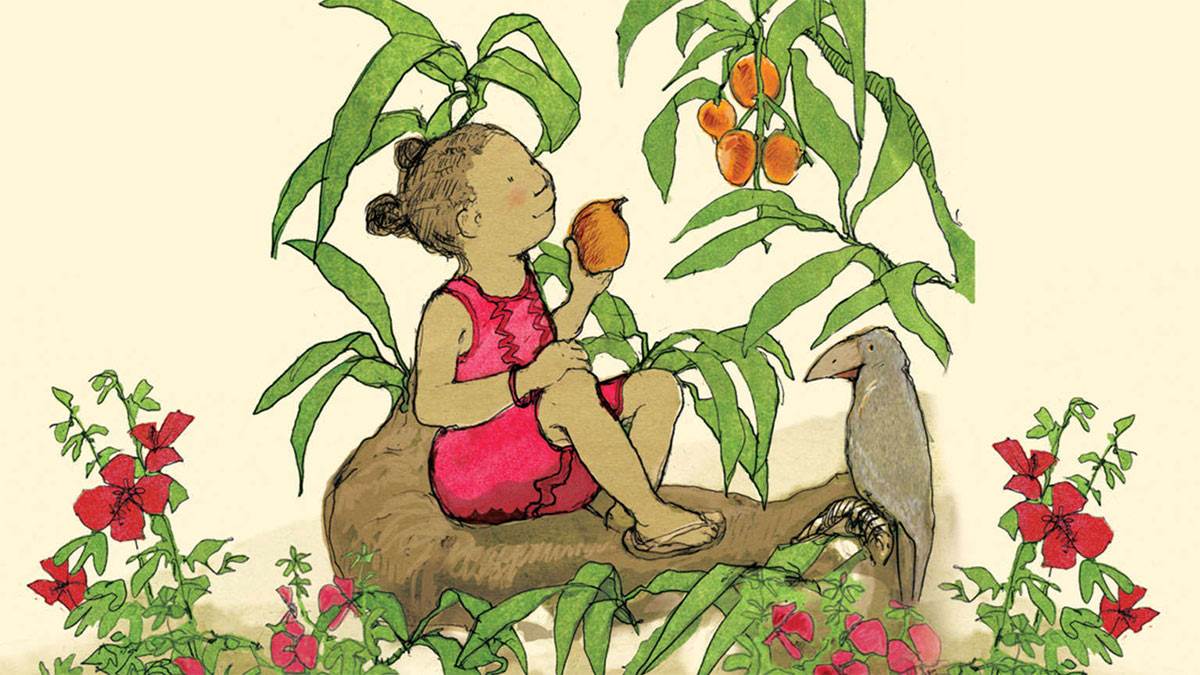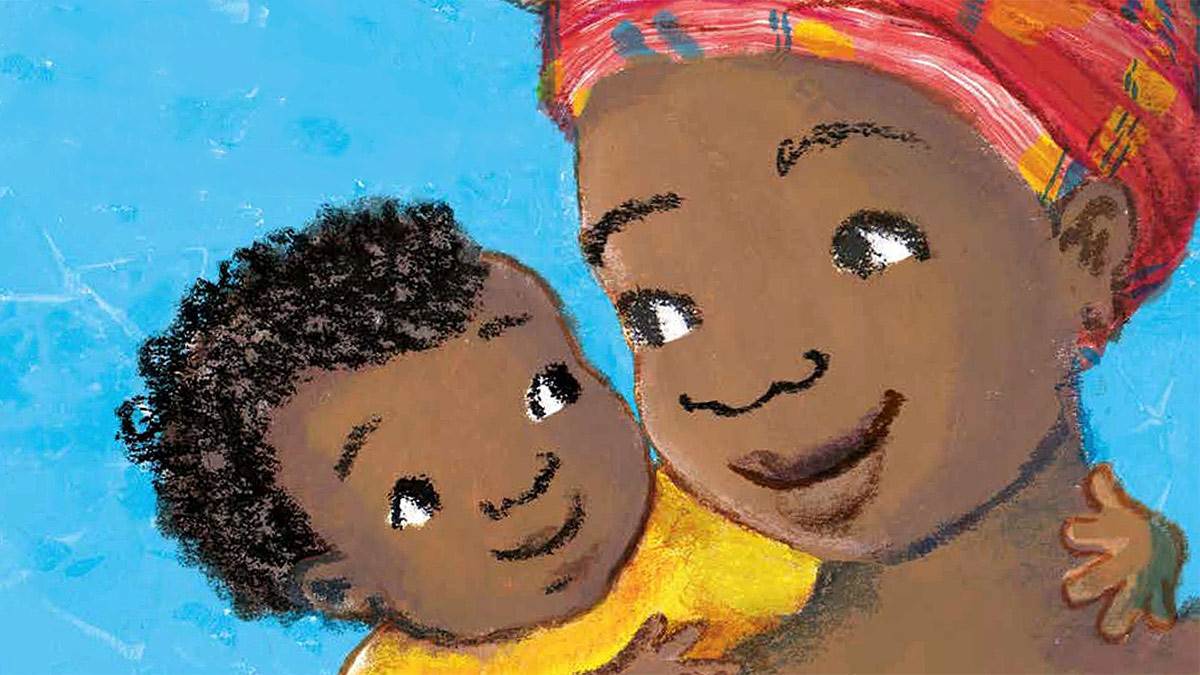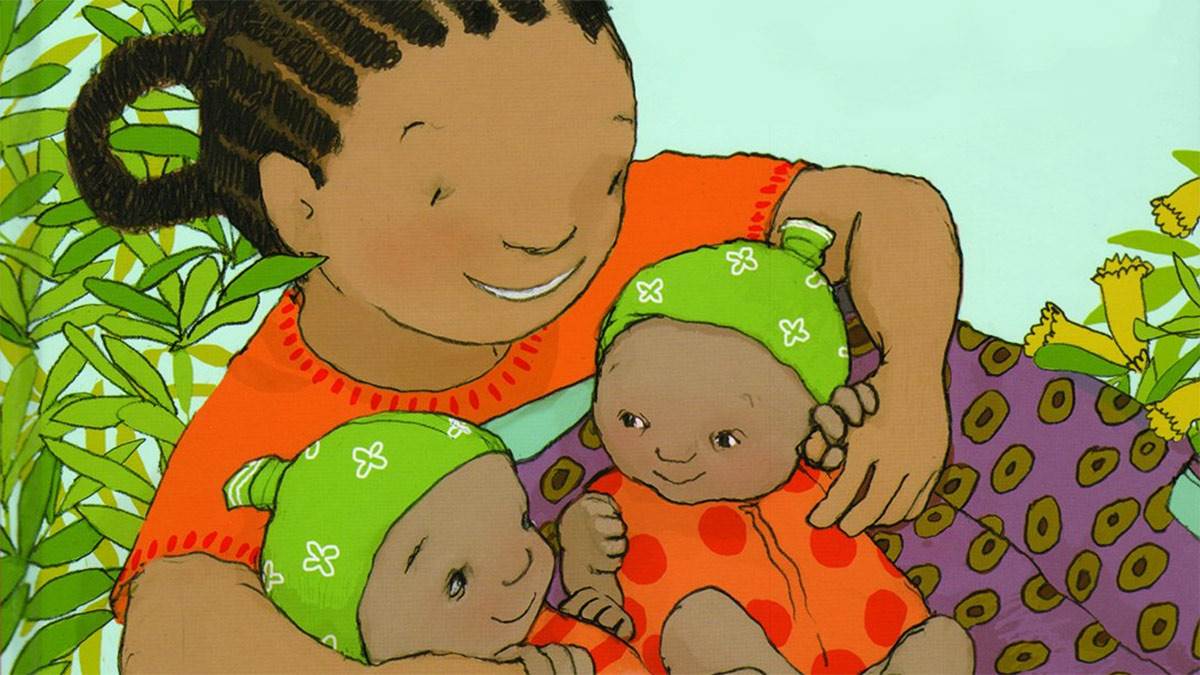'Black books matter too': Atinuke on the power of stories
Published on: 16 April 2019 Author: Atinuke
Following the launch of our BookTrust Represents project, Anna Hibiscus author Atinuke reflects on the impact of the stories she read as a child - and how important it is for young people to have books that represent them.

Illustration: Lauren Tobia
Almost every time I am among book-loving black people, someone talks about how, the first time they picked up a novel about black people, they found themselves thinking, 'Oh! So black people are important too!'
The message received by a black person in a world of white books is that white lives matter more, they are more important, more worthy, more literary. But black lives matter too...
A white librarian who has worked in the same school library for over 25 years told me that the pupils in the school have slowly gone from being predominantly white to being predominantly black. And she found that the new demographic were far less interested in reading.
She tried all her tricks - reading to them, introducing them to individual books that matched their interests. But it was not until she stocked the library with books that had black children on the cover that they voluntarily picked them off the shelves.
Those kids were just not interested in reading about the world though a white filter.
How things can go badly wrong

Illustration: Angela Brooksbank
People of colour of my generation who were passionate book lovers talk about devouring every book put in front of them as a child, mostly by Enid Blyton, and all about white middle class children. And this too caused problems.
Books are powerful. They allow us to escape into different worlds, give us insight into other lives, widen our horizons, and offer us escape routes. But if they only show us one homogenised perspective, and if that homogenised perspective is not ours, then things can go badly wrong.
Black women who made important life decisions influenced by books written solely about middle class white girls email me from time to time. They regret those decisions now.
I was one of them. One of those girls who loved to read anything I could get my hands on. And inspired by all the fun in Malory Towers, I begged to go to boarding school. There, instead of midnight feasts, I was met with crucifying racism from some teachers.
Seeing books through a filter
The librarian I've mentioned says the most important thing her pupils have taught her is that she is a white woman. She used to think that she was just a woman, that she was neutral. But her black pupils have taught her that she is a white woman, and so she inevitably sees things through that filter. It seems obvious now - how could she have ever thought it to be otherwise?
In the same way, she used to think that she had books in her library. But they were not just books - they were books that showed life though the filter of being white, and so they were less relevant to black lives. Now her library is filled with books that have black children on the cover - because black lives matter too.
I am now the author of a pile of children's books about black children, in part because the country of my birth, Nigeria, is the most interesting, colourful, creative, chaotic, delicious, fashionable, and inspirational country that I have ever lived in. And in part because I want other children of African heritage to have the life-affirming joy which I never had as a child - to see themselves in a book.
Making a change

Illustration: Lauren Tobia
As a black author, one of the most important things I do is appearing at school events. Just standing in front of a hall full of children, with my books arrayed behind me, gives children - both white and black - the message that black lives matter.
So much more is needed if we want society to change. In a culture where literacy is key to success, black children's books shout the message that black lives are important and worthy too.
Last year the Center for Learning in Primary Education published the first UK study looking at diversity in children's literature. The shocking result - that only 1% of children's books published in 2017 had a BAME main character - led to a stream of articles in the media calling for change.
The CLIP Carnegie and Kate Greenway award followed by undergoing a review because of the lack of diversity in the winners of its awards.
And now BookTrust Represent's research and project gives us a picture of the writers and illustrators of color published in the UK in the last 11 years. This could be used as a real tool for change.
But the media too needs to change. If we want more black books, the media will have to celebrate the ones we have already - not just so that parents and educators know what is out there, but to show that black books matter too.






Add a comment